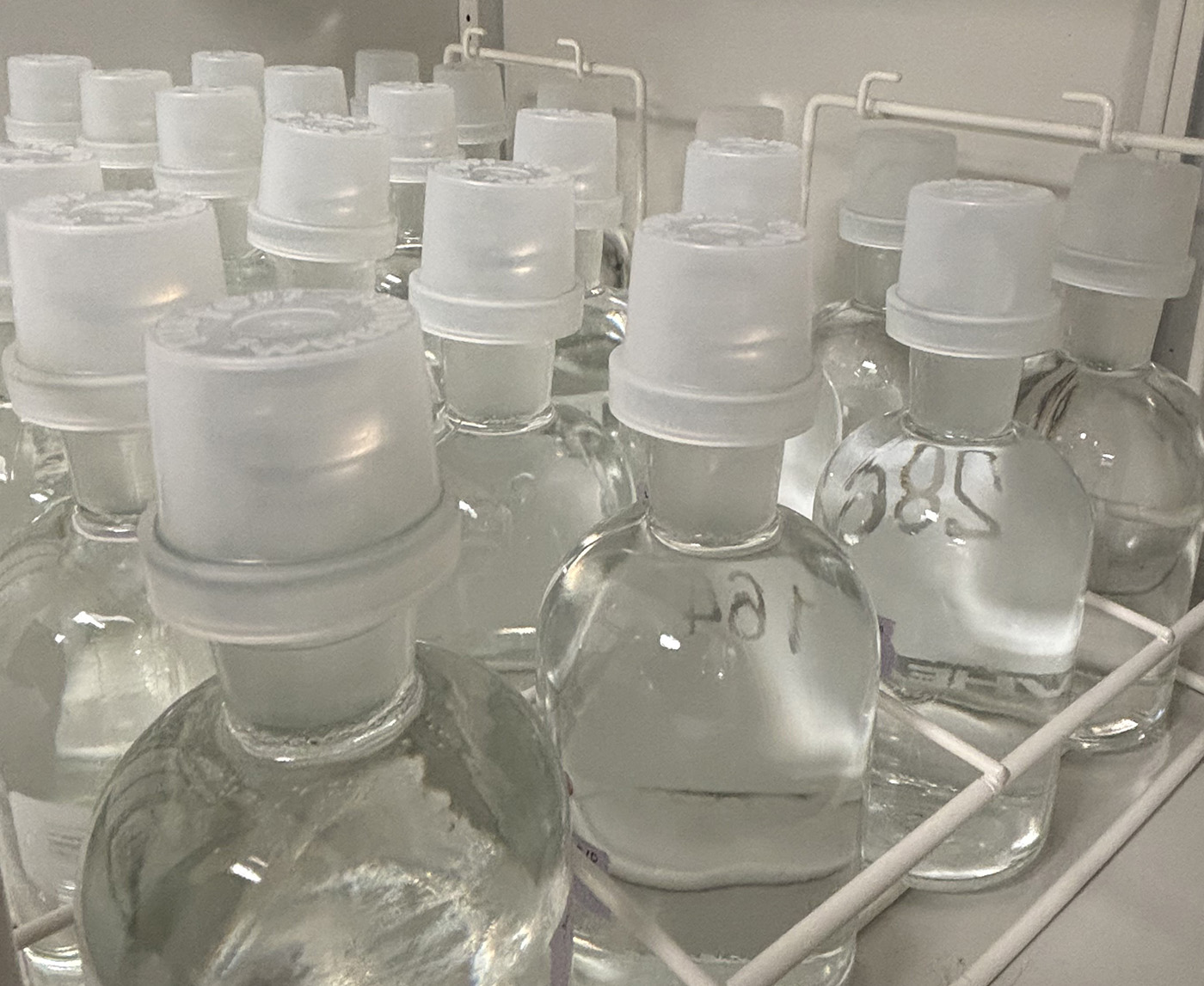Summary
ISO 23977-2 determines the degree and rate of the aerobic biodegradation level of plastic materials by measuring the oxygen demand in a closed respirometer when exposed to seawater sampled from coastal areas under laboratory conditions. These testing conditions do not always correspond to ideal conditions for the maximum degree of biodegradation, but ISO 23977-2 gives an indication of the potential biodegradability of plastic materials.
ISO 23977-2 Testing Method
There are two testing conditions for the ISO 23977-2 test. Both are performed under mesophilic test conditions and the plastic materials are incubated with either seawater only, called the pelagic seawater test, or with seawater that has been mixed with a low amount of sediment, called the suspended sediment seawater test.
The chemical formula of the test substance is used to calculate the theoretical oxygen demand. The oxygen consumed during the testing time period — up to two years — is compared to the theoretical oxygen demand to determine the degree of biodegradation of the plastic.
Here are some additional details about the ISO 23977-2 test method:
- Materials that can be tested:
- Plastic materials
- Test substance requirements:
- Formula needs to be known in order to calculate the ThOD
- Powder form is preferable with a maximum particle size of 250um in diameter
- Similar shapes of different substances should be used if they are to be compared
- Measurement: Oxygen consumption
- Temperature: 15-25°C
- Reference: A well-defined biodegradable polymer (e.g. microcrystalline cellulose powder or ashless cellulose filters)
- Test substance dosage: At least 100mg/L of the substance, or 170mg/L of ThOD
- Reactor: 300mL volume with 90mL of natural seawater only, or natural seawater with 0.1-1g/L of sediment
- Number of reactors: 3 for blank control, 3 for reference control, and 3 for each test substance
- Duration: Normally up to 1 year, but the test can be prolonged up to 2 years if significant biodegradation is still being observed
- Upon test termination: pH, nitrate and nitrite are determined to correct the calculated degree of biodegradation for nitrification
Are You Looking for ISO 23977-2 Testing? Aropha is Here for You
When you need biodegradability testing, Aropha is your partner. We strive to provide you with efficient, streamlined biodegradability testing so you can substantiate claims on your products as quickly as possible. Our test capabilities are unique, combining digital twin simulations and lab biodegradability testing to provide quality testing for all stages of your product development.
Ready to get started or have some questions? Contact us today!
ISO 23977-2 Requirement and Applicability
Different testing methods are applicable for materials with different properties. Below is a summary of the applicability of ISO 23977-2. Please check our Method Selection Guide to select the most appropriate method for your materials. You can also find the applicability for many other methods in our Resource Center.| Test | Analytical method | Sample info required * | Poorly soluble | Volatile | Adsorbing |
|---|---|---|---|---|---|
| ISO 23977-2 | Oxygen consumption | ThOD * | + | + | + |
*“Sample info required” is the information needed to calculate the biodegradation percentages. This must be available for a selected method.
*“ThOD” can be easily calculated based on the formula of the sample. Try our Online ThOD Calculator.
Pricing
Contact us for High-Throughput Screening PricingContact us for Biodegradability Certification Pricing

